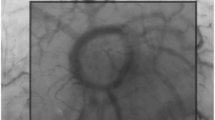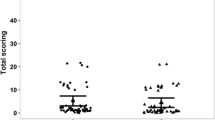Abstract
A new fluorescence intravital microscope of long working distance (39 mm) has been developed for the observation of microcirculation in a wide visual field by designing a simple epi-illumination technique with dual laser beams. Cross-illumination, in which a pair of laser beams is symmetrically placed on either side of the objective such that they intersect at the focal plane of the objective, was employed to produce uniform distribution of the incident light in the object plane. In vitro experiments using a fluorescein isothiocyanate dextran (FITC-dextran; molecular weight=70 000) solution of known concentration confirmed uniform tracer excitation in a wide visual field (approximately 30 mm2), and a linear correlation between fluorescence intensity and tracer concentration (r=0.999), ranging between 5μmol l−1 and 25μmol l−1. In vivo observations in the microcirculation of a hamster cheek pouch indicated that the present technique had the advantage of high contrast compared with the image obtained by bright-field transillumination. This microscope illuminator may prove useful for the evaluation of vascular permeability under physiological and inflammatory conditions, with sufficient quantitative reliability to determine tracer concentrations in all parts of the microvascular network. Furthermore, a long working distance in this technique could have considerable advantages for the application to nail-fold capillaroscopy in humans.
Similar content being viewed by others
References
Agard, D. A., andSedat, J. W. (1983): ‘Three-dimensional architecture of a polytene nucleus,’Nature Lond.,302, pp. 676–681
Agard, D. A., Hiraoka, Y., Shaw, P., andSedat, J. W. (1989): ‘Fluorescence microscopy in three dimensions’, inTaylor, D.L. andWang, Y-L. (Eds): ‘Methods in cell biology. Fluorescence microscopy of living cells in culture, Vol. 30, Part B’ (Academic Press, San Diego), pp. 353–377
Armenante, P. M., Kim, D., andDuran, W. N. (1991): ‘Experimental determination of the linear correlation between in vivo TV fluorescence intensity and vascular and tissue FITC-DX concentrations,’Microvasc. Res.,42, pp. 198–208
Boyde, A. (1985): ‘Stereoscopic images in confocal (Tandem scanning) microscopy,’Science,230, pp. 1270–1272
Gerlowski, L. E., andJain, K. J. (1986): ‘Microvascular permeability of normal and neoplastic tissues,’Microvasc. Res.,31, pp. 288–305
Inoue, S. (1986): ‘Video microscopy’ (Plenum Press, New York)
Lemasters, J. J., Chacon, E., Zahrebelski, G., Reece, J. M., andNieminen, A.-L. (1993): ‘Laser Scanning Confocal Microscopy of Living Cell,’ inHerman, B. andLemasters, J. J. (Eds): ‘Optical microscopy’ (Academic Press, San Diego), pp. 339–354
Lichtenbeld, H. C., Yuan, F., Michel, C. C., andJain, R. K. (1996): ‘Perfusion of tumor microvessels: Application to vascular permeability measurement,’Microcirculation,3, pp. 349–357
Martin, G. R., andJain, R. K. (1993): ‘Fluorescence ratio imaging measurement of pH gradients: Calibration and application in normal and tumor tissues,’Microvasc. Res.,46, pp. 216–230
Mayhan, W. G. (1994): ‘Nitric oxide accounts for histamine-induced increases in macromolecular extravasation,’Am. J. Physiol. 266, pp. H2369-H2373
McCusley, R. S. (1993): ‘Intravital microscopy’ inHerman, B. andLemasters, J. J. (Eds): ‘Optical microscopy’ (Academic Press, San Diego), pp. 355–372
Nakamura, Y., andWayland, H. (1975): ‘Macromolecular transport in the cat mesentery,’Microvasc. Res. 9, pp. 1–21
Shibata, M., Kawamura, T., Sohirad, M., andKamiya, A. (1995): ‘A new fluorescence microscopy for tomographic observation of microcirculation by using dual-beam slit laser illumination,’Microvasc. Res.,49, pp. 300–314
Toth, A., Tischler, M. E., Pal, M., Koller, A., andJohnson, P. C. (1992): ‘A multipurpose instrument for quantitative intravital microscopy,’J. Appl. Physiol.,73, pp. 296–306
Wu, N. Z., andBaldwin, A. L. (1992): ‘Transient venular permeability increase and endothelial gap formation induced by histamine,’Am. J. Physiol.,262, pp. H1238-H1247
Wu, N. Z., Klitzman, B., Rosner, G., Needham, D., andDewhirst, M. W. (1993): ‘Measurement of material extravasation in microvascular networks using fluorescence video-microscopy,’Microvasc. Res.,46, pp. 231–253
Author information
Authors and Affiliations
Corresponding author
Rights and permissions
About this article
Cite this article
Shibata, M., Ichioka, S. & Kamiya, A. Dual-beam laser illuminator of fluorescence microscope forin vivo microcirculation studies. Med. Biol. Eng. Comput. 37, 424–427 (1999). https://doi.org/10.1007/BF02513324
Received:
Accepted:
Issue Date:
DOI: https://doi.org/10.1007/BF02513324




